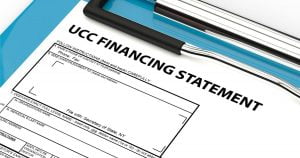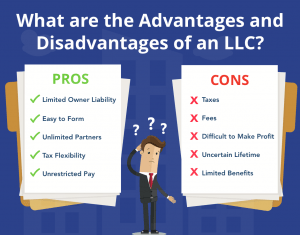The UCC Financing Statement for a Coop in NYC
Go Back To Previous PageAre you considering buying a co-op in NYC? Make sure you’re ready to file a UCC-1 financing statement. We’ll explain in this article what a co-op UCC Financing Statement is. We will describe what it looks like and why banks need one to fund your loan. Please read our guide to learn everything you need about UCC-1 financing statements.
Financing Statement is. We will describe what it looks like and why banks need one to fund your loan. Please read our guide to learn everything you need about UCC-1 financing statements.
What Is a Co-op UCC Filing in NYC?
Co-op shares fall under the legal definition of tangible personal property; therefore, you cannot secure interests in personal property with a traditional mortgage. Personal property can include various business assets such as inventory, Equipment, and co-op shares.
Personal property can include various business assets such as inventory, Equipment, and co-op shares.
Lenders must look to the Uniform Commercial Code to secure their loans when dealing with personal property purchases. Under the Uniform Commercial Code laws and statutes, a UCC-1 financing statement gets filed when a lender uses personal property as Collateral.
As a result, a UCC filing on a coop will allow the bank to benefit from a secured loan (vs. an unsecured loan). Therefore, a UCC filing is necessary if you buy a coop in NYC.
A UCC filing is a substitute for recording a mortgage. We explained co-op apartments are not real property. Mortgages are only applicable to real property. As a result, banks lending against co-op shares need to rely on the Uniform Commercial Code (UCC).
Co-op lenders must rely on the Uniform Commercial Code, or the UCC, to secure their loans. A UCC-1 financing statement is a 1-2-page form filed with the state secretary, which places a lien on the borrower’s personal property, the co-op shares.
In effect, the filing of the UCC-1 gives third parties public notice of the lender’s security interest in personal property. It ensures that the borrower cannot sell their shares without paying off their loan first. This is a necessary form for lenders because not perfecting their interest in the co-op shares could have severe ramifications in a borrower’s default. The borrower cannot acquire additional indebtedness on the co-op without formal notification and the bank’s approval.
What is the UCC-1 Financing Statement?
A UCC-1 financing statement is the standard form lenders that require co-op buyers to file when borrowing. The UCC-1 becomes relevant when a borrower purchases personal property, such as co-op shares, instead of real property.
Examples of real property include land, buildings, and structures, which somebody can purchase using a traditional mortgage.
Sample language for The UCC Financing Statement for a Coop in NYC Schedules A to UCC-1 Financing Statement.
Debtor: Cooperative XYZ
Secured Party: Bank ABC
The types of property and interests covered by this UCC-1 Financing Statement, including the following (any capitalized terms used in this Schedule A and not defined herein shall have the meaning assigned to them in that certain Consolidation, Extension, and Modification Agreement (CEMA loan) between Debtor and Secured Party (the “Mortgage”)):
All rights, titles, and interests in and to the real property or properties described on Exhibit A hereto (collectively, the “Land”) are the same premises conveyed to the Debtor by deed recorded in […].
All additional lands, estates, and development rights hereafter acquired by the Debtor for use in connection with the Land and the development of the Land and all other lands and estates therein which may, from time to time, by a supplemental mortgage or otherwise, expressly made subject to the lien thereof (collectively, the “Additional Land”).
Any buildings, structures, fixtures, additions, enlargements, extensions, modifications, repairs, replacements, and improvements now or hereafter located on the Land or any part thereof (collectively, the “Improvements”; the Land, the Additional Land, and the Improvements from now on collectively referred to as the “Real Property”).
All easements, rights-of-way, strips and gores of land, streets, ways, alleys, passages, sewer rights, water, watercourses, water rights and powers, oil, gas and mineral rights, air rights and development rights, zoning rights, tax credits or benefits and all estates, rights, titles, interests, privileges, liberties, tenements, hereditaments and appurtenances of any nature whatsoever in any way now or hereafter belonging, relating or pertaining to the Real Property or any part thereof and the reversion and reversions, remainder and remainders and all land lying in the bed of any street, road or avenue, opened or proposed, in front of or adjoining the Land or any party thereof to the center line thereof and all the estates, rights, titles, interests, dower and rights of dower, curtesy and rights of curtesy, property, possession, claim and demand whatsoever, both in law and in equity, of Debtor in, of and to the Real Property and every part and parcel thereof, with the appurtenances thereto.
Machinery, Equipment, fixtures, appliances and other property of every kind and nature whatsoever owned by Debtor or in which Debtor has or shall have an interest (to the extent of such interest) now or hereafter located upon the Real Property or appurtenant thereto and usable in connection with the present or future operation and occupancy of the Real Property and all building equipment, materials and supplies of any nature whatsoever owned by Debtor or in which Debtor has or shall have an interest (to the extent of such interest) now or hereafter located upon the Real Property or appurtenant thereto or usable in connection with the present or future operation and occupancy of the Real Property, including but not limited to all heating, ventilating, air conditioning, plumbing, lighting, communications and elevator machinery, Equipment and fixtures, and all plumbing and bathroom fixtures, refrigeration equipment, sprinkler systems, wash tubs, sinks, gas and electric fixtures, stoves, ranges, ovens, disposals, refrigerators, dishwashers, hood and fan combinations, carpeting, drapes, lobby furnishings, awnings, screens, window shades, refrigerators, kitchen cabinets, incinerators, kitchen equipment, laundry equipment (including, without limitation, washers and dryers), plants and shrubbery, pool furniture and Equipment, exercise equipment and all other Equipment and machinery, appliances, fittings and fixtures of every kind located in or used in the operation of the Real Property or any part thereof, together with any and all replacements thereof and additions thereto (hereinafter collectively referred to as the “Equipment”) and the right, title and interest of Debtor in and to any of the Equipment which may be subject to any security agreements (as defined in the Uniform Commercial Code of the State in which the Real Property is located (the “Uniform Commercial Code”)) superior, inferior or pari passu in lien to the lien of this UCC-1 Financing Statement. In connection with Equipment that is leased to the Debtor or which is subject to a lien or security interest that is superior to the lien of this UCC-1 Financing Statement, this UCC-1 Financing Statement shall also cover all rights, title, and interests of the Debtor in and to all deposits and the benefit of all payments now or hereafter made concerning such Equipment.
Awards or payments, including interest thereon, which may heretofore and hereafter made witconcerninge Real Property or any part thereof, whether from the exercise of the right of eminent domain (including but not limited to any transfer made instead of or in anticipation of the exercise of said right) or for a change of grade or any other injury to or decrease in the value of the Real Property.
Leases and subleases (including, without limitation, all guarantees thereof and security therefor, including, without limitation, all right, title and interest in and to any letters of credit now owned or hereafter acquired by, or delivered to, Debtor by any tenant of the Real Property or additional security for the performance of such tenant’s obligations under its Lease or constituting “supporting obligations” for such leases and guarantees, as such term is defined in Article 9 of the Uniform Commercial Code, all letter of credit rights and any and all proceeds of such letters of credit or right to receive the proceeds of such letters of credit or to otherwise receive the benefit of any draw upon any such letter of credit, whether such right, tile and interest of Debtor is classified as a supporting obligation, letter of credit right, account, contract right, general intangible or instrument under applicable law, together with all proceeds thereof), and other agreements affecting the use, enjoyment and/or occupancy of the Real Property or any part thereof, now or hereafter entered into (including any use or occupancy arrangements created pursuant to Section 365(h) of Title 11 of the United States Code (the “Bankruptcy Code”) or otherwise in connection with the commencement or continuance of any bankruptcy, reorganization, arrangement, insolvency, dissolution, receivership or similar proceedings or any assignment for the benefit of creditors in respect of any tenant or occupant of any portion of the Real Property), together with any extension or renewal of the same (the “Leases”) and all income, rents, issues, profits, revenues and proceeds including, but not limited to, all oil and gas or other mineral royalties and bonuses from the Real Property (including any payments received pursuant to Section 502(b) of the Bankruptcy Coe or otherwise in connections with the commencement or continuance of any bankruptcy, reorganization, arrangement, insolvency, dissolution, receivership or similar proceedings or any assignment for the benefit of creditors in respect of any tenant or occupant of any portion of the Real Property and all claims as a creditor in connection with any of the foregoing) (the “Rents”) and all proceeds from the sale, cancellation, surrender or other disposition of the Leases and the right to receive and apply the Rents to the payment of the Indebtedness.
Proceeds of any unearned premiums on any insurance policies covering the Real Property or any part thereof, including, without limitation, the right to receive and apply the proceeds of any insurance, judgments, or settlements made in lieu thereof for damage to the Real Property or any part thereof.
Tax refunds, including interest thereon, tax credits, tax abatements, and the right to receive or benefit from the same, remain payable or available concerning the Real Property.
The right, in the name and on behalf of the Debtor, to appear in and defend any action or proceeding brought concerning the Real Property or any part thereof and to commence any action or proceeding to protect the interest of the Secured Party in the Real Property or any part thereof.
Accounts receivable, utility, or other deposits, intangibles, contract rights, interests, estates, or other claims, both in law and in equity, which Debtor now has or may hereafter acquire in the Real Property or any part thereof, and all funds and deposit accounts and other accounts into which any funds of Debtor are now or hereafter deposited on behalf of or for the benefit of Secured Party.
Rights which Debtor now has or may hereafter acquire to be indemnified and held harmless from any liability, loss, damage, cost, or expense (including, without limitation, attorneys’ fees and disbursements) relating to the Real Property or any part thereof.
All plans and specifications, maps, surveys, studies, reports, contracts, subcontracts, service contracts, management contracts, franchise agreements and other agreements, franchises, trade names, trademarks, symbols, service marks, approvals, consents, permits, special permits, licenses and rights, whether governmental or otherwise, respecting the use, occupation, development, construction and operation of the Real Property or any part thereof or the activities conducted thereon or therein, or otherwise about the Real Property or any part thereof.
Agreements, contracts, certificates, instruments, franchises, permits, trademarks, licenses, and other documents, now or hereafter, entered into. All rights therein and to it, respecting or about the operation and management of the Real Property as a cooperative residential apartment building with ground-floor retail stores and basement parking garage and the organization, operation, and management of Debtor as a corporation, including, without limitation, cooperative offering plan, co-op bylaws and articles of incorporation of Debtor, Proprietary Leases and Commercial Leases, management agreement, shareholder agreements, subscription agreements, and any related documents (the “Cooperative Documents”), and all right, title and interest of Debtor therein and thereunder, including, without limitation, the right upon the occurrence of any Event of Default hereunder to receive and collect any sums payable to Debtor thereunder.
Proceeds, products, offspring, rents, and profits from any of the preceding, including without limitation, those from the sale, exchange, transfer, collection, loss, damage, disposition, substitution, or replacement of any of the foregoing, and all other, further or additional title, estates, interest or rights which may exist now or at any time get acquired by Debtor in or to any of the foregoing, including, without limitation, the Real Property, or any part thereof.
The property described in the foregoing paragraphs is called the “Collateral.”
For the avoidance of doubt, it is expressly understood and agreed that any of the foregoing terms included in the description of Collateral shall refer to any definitions thereof in the applicable Uniform Commercial Code, it being the intention of the parties hereto that the description of Collateral set forth herein be construed to include the broadest possible range of property and assets and all tangible and intangible personal property and fixtures of the Debtor of every kind and description.
Why You Need to File a UCC-1 Financing Statement When Buying a Co-op in NYC
If financing your New York City co-op purchase, you must file a UCC-1 financing statement with the secretary of state. Buying into a co-op is a non-traditional way to purchase real estate, presenting unique challenges for lenders. A co-op or cooperative housing is a model where the buyer purchases equity in a corporation that owns real property.
Buying into a co-op is a non-traditional way to purchase real estate, presenting unique challenges for lenders. A co-op or cooperative housing is a model where the buyer purchases equity in a corporation that owns real property.
A corporation is formed, and that corporation purchases and owns the real estate, and what you are purchasing is equity in the form of shares in that corporation.
Banks and lending institutions need a way to secure their interest in these loans if a borrower defaults. Take the case of a traditional mortgage; the bank extends a loan to a borrower to purchase real property.
Therefore, that real property is used as Collateral. The bank may seize the real property if the buyer defaults on the loan, minimizing potential losses and, in effect, securing the loan.
Filing a UCC-1 financing statement on your co-op is a substitute for a traditional mortgage and is how lenders secure their loans. Pointing the UCC-1 puts subsequent creditors on notice that the lender has an interest in the co-op shares, which they can collect if a borrower fails to repay their loan.
How do I File a UCC-1 Financing Statement in New York?
Before filing your UCC-1 Financing statement, your lender must obtain a ‘security interest’ in the Collateral (the co-op shares). To attach a lien, your lender must become legally associated with the co-op shares. A security interest is created by executing a written security agreement.
Your lender will require you to sign a security agreement, which will, in effect, grant your lender an interest in your co-op shares in exchange for your loan. Signing this document paves the way for the UCC-1 and is your lender’s first step to securing its spot and establishing priority over later third-party creditors.
The New York UCC-1 financing statement is a standard form filled out and submitted electronically.
How to Describe Your Collateral
While filling out your UCC-1, you describe the Collateral. In this section, you should include your number of co-op shares, apartment number, the state that you have a proprietary lease with x NYC cooperative corporation, and complete building address, including city tax lot and block.


